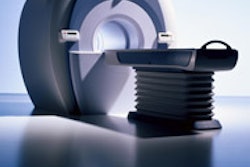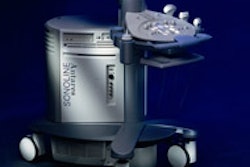CHICAGO - Bipolar disorder often presents a diagnostic challenge since currently diagnosis requires documentation of at least two distinct episodes -- mania and depression. As a result, patients are often undiagnosed or misdiagnosed for years. But preliminary research suggests that magnetic resonance spectroscopy imaging (MRSI) may take the guesswork and delay out of diagnosis by providing a "chemical fingerprint of bipolar disorder," according to Dr. John D. Port, Ph.D., assistant professor of radiology at the Mayo Clinic in Rochester, MN.
The MRSI study included 19 patients with bipolar disorder confirmed by psychological testing. Patients were medication and drug naive. "We wanted a picture of the bipolar brain in its natural state, before drugs could alter brain chemistry," Port explained in a presentation at the RSNA meeting on Tuesday.
The average age of the patients was 32, but one patient "was 55 and he had just been diagnosed with bipolar disorder, which points out the difficulty of diagnosis," he said.
All patients also underwent mood assessment on the same day as imaging. MRSI was performed on a 3-tesla long-bore scanner (GE Healthcare, Waukesha, WI) using PRESS-MRSI (TE = 30, voxel size 1.25 x 1.25 x 1.3 cm = 2.02 cc); two slices were obtained, one through the basal ganglia and one through the anterior cingulate gyrus.
The scan analyzed metabolites of five brain chemicals, and produced a graph illustrating region-by-region variations in the metabolites. The regional differences "are the patterns that serve as a chemical fingerprint," Port said.
In comparing the images from the 19 patients to scans done in 19 age- and sex-matched healthy volunteers, distinct and different patterns emerged. Port told Auntminnie.com in an interview that "we aren’t looking for a single marker, but rather a pattern or series of markers that when combined add up to a diagnosis of bipolar disorder."
Port also categorized the scans according to manic, depressed, or euthymic, and "differences were also clearly visible based on mood state," he said.
A particularly interesting aspect of the "chemical fingerprint" was the finding that patients with the most severe bipolar disease had different patterns than patients with mild to moderate disease, suggesting that the severe bipolar disorder may require a different or more aggressive treatment, Port said. A second "surprising" finding was the discovery that parietal white matter, which previous research suggested was unaffected by bipolar disease, does appear to experience chemical shifts similar to those seen in other brain regions, he said.
According to Port, the next research step will be a study of patients undergoing medical treatment for bipolar disorder to determine if MRSI can detect changes in brain chemistry in response to medication.
By M.M. Pennell
AuntMinnie.com contributing writer
November 30, 2004
Related Reading
Secretin infusions activate amygdala, may normalize affect in psychiatric patients, April 29, 2004
New MR approach quantifies brain metabolite concentrations, March 6, 2004
Echo-planar MR spectroscopy improves mood in depressed patients, January 5, 2004
Copyright © 2004 AuntMinnie.com



















